#sacred resin
Explore tagged Tumblr posts
Text
A Connection Between Worlds
Capturing the Mystical The Tree of Life has roots that wind through countless cultures, from the Norse Yggdrasil to the sacred Bodhi tree of Buddhist tradition. Its branches stretch toward the divine, while its roots delve into the underworld, embodying the idea of connection—between life and death, earth and sky, humanity and the divine. Kopal, derived from trees thriving in tropical regions,…

View On WordPress
#Ancient Wisdom#Aztec traditions#divine connection#Kopal wood#Mayan rituals#mystical forest.#sacred resin#spiritual cleansing#spiritual symbolism#Tree of Life
0 notes
Text
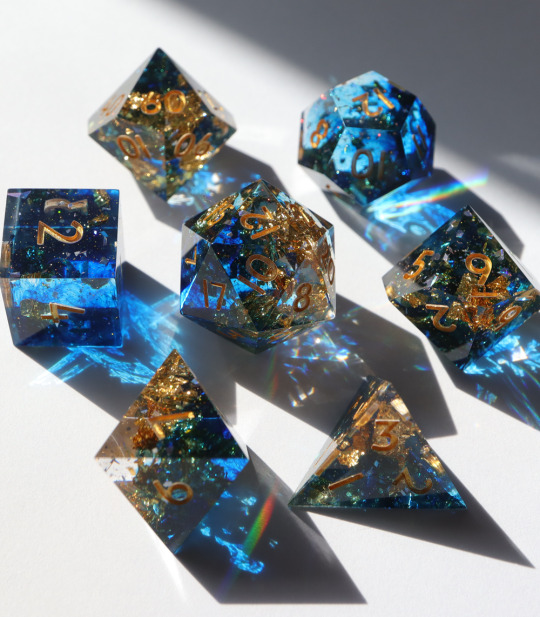
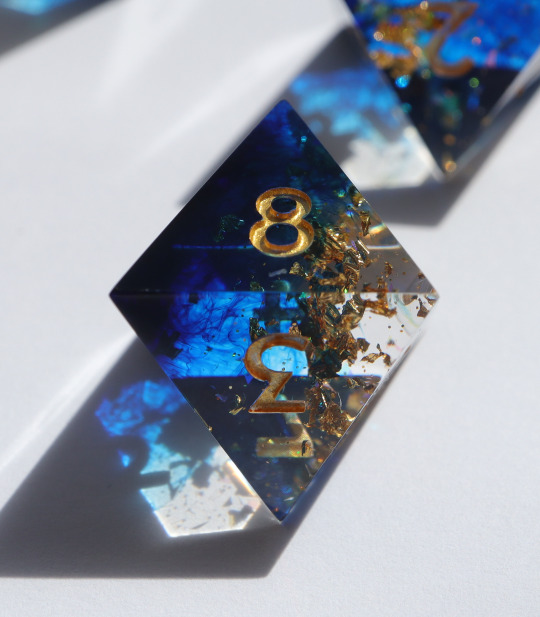
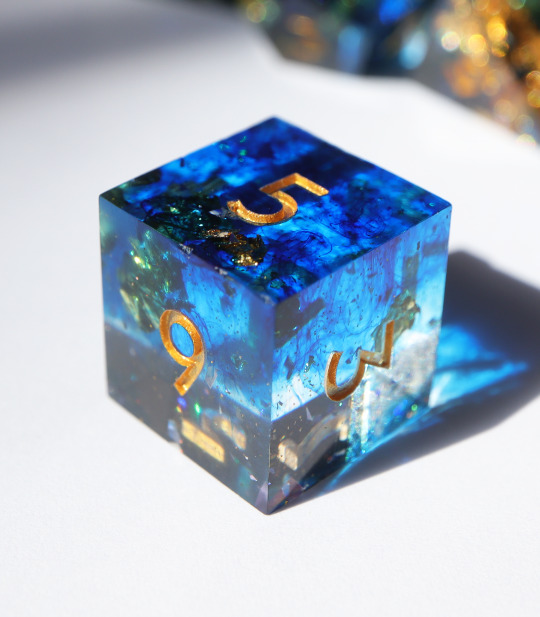
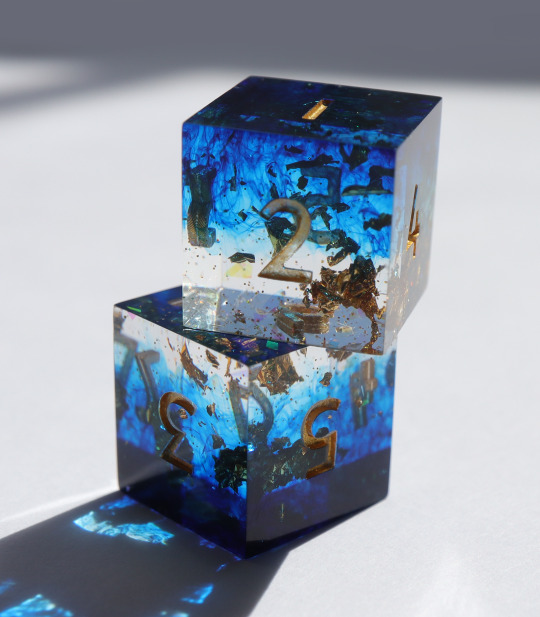
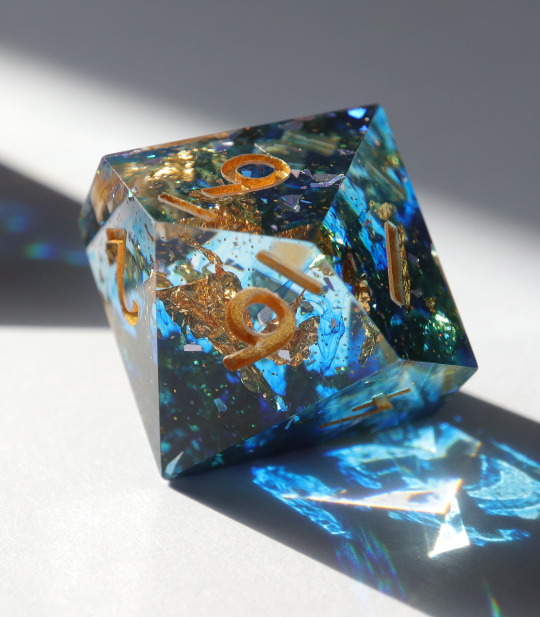
𝔖𝔞𝔠𝔯𝔢𝔡 𝔉𝔩𝔞𝔪𝔢 | link
The power to protect and punish with blinding radiance
#Sacred Flame#dice#dnd#dungeons and dragons#ttrpg#dnd dice#resin dice#blue dice#gold dice#artists on tumblr
179 notes
·
View notes
Note
saw your modern au piece where you tagged 'scenthound' and it just made me think about vasco in the original story after machete dies and how he'll never smell and take comfort in whatever unique smell machete had ever again and whoops I made myself sad
O- oh...
To be honest I don't know if Vasco's sense of smell is significantly better than a non-scenthound dog's (I mean maybe a little? Since scenthounds tend to have large nasal cavities and more room for olfactory receptors than a dog with shorter or narrower snout? But it's not really relevant in this context).
The way I see it, dog people's sense of smell is more acute than ours, but not as overpowered as that of an actual dog. Scents are more meaningful to them. For example, when you spend enough time with someone, your scents start to blend together, and smelling like your partner/family is an important part of bonding. I'd imagine that it plays into grieving process too. Even if you held on to the belongings of the deceased, their specific scent will eventually fade away from them as well.
I've talked about how the dogs perceive smells here and here.
#answered#anonymous#Vaschete lore#Machete tends to smell primarily of frankincense#the sacred incense burned during mass#a central part of that classic smoky woody sweet resinous church smell#it sticks to his fur and clothes#also probably books paper and ink and mild soap from bathing so diligently
207 notes
·
View notes
Text
me on woodworking tiktok after the eighth video in a row in which someone makes a table top by pouring a bunch of blue resin between two live edges of wood to create an “ocean effect”:

#specific example but this goes for any project where you’re pouring resin all over perfectly good wood#wood is sacred you ghouls
19 notes
·
View notes
Text
Tarot 📿PICK A CARD🌼: “Random Ass Messages?” Extreme Success, Divine Romance, & Spiritual Hygiene
youtube
#herbs#resins#return to sender#spells#Magick#magic#hidden knowledge#sacred knowledge#black witch#witchy#witchcraft#rootwork#rootworker#tarot readings#tarot card readings#tarot#santa muerte#spirit guides#readings#oracles#supplies#spirituality#advice#guidance#soulmates#divine Union#divine partners#love#manifesting#manifestation
1 note
·
View note
Text

The Immaculate Sacred Heart. 2008. Damien Hirst British b.1963 acrylic, painted stainless steel, stainless steel, resin, silicone, sterling silver barbed wire, monofilament, bull's heart, dove's wings and formaldehyde solution. http://hadrian6.tumblr.com
4K notes
·
View notes
Text
Winter's Eve

- Summary: A short story for Christmas Eve.
- Pairing: velaryon!reader/Cregan Stark
- Note: The reader is Rhaenyra's daughter.
- Rating: Mild 13+
- Tag(s): @sachaa-ff @oxymakestheworldgoround @daeryna @melsunshine @21-princess
- A/N: I'm wishing you all warm and happy Christmas Eve. Be kind to yourself. ❤️

The snow fell thick and silent outside the towering walls of Winterfell, blanketing the world in a hushed stillness that seemed sacred. The air smelled of evergreen and pine resin, mingling with the faint, rich scent of roasted venison wafting through the stone halls. It was Winter’s Eve, the North’s cherished celebration of hearth and kinship, a day to honor the gods for surviving the long night and welcoming the promise of lengthening days.
Candles glowed warmly in every nook of the Great Hall, their light shimmering off the polished swords hung as decorations along the walls. Evergreen boughs and red winterberries adorned the long wooden tables, filling the air with a faint, crisp fragrance. The hall was alive with laughter and song, the kind of revelry that made the cold beyond the walls seem a distant memory.
You stood near the hearth, the massive blaze casting your silver hair in a warm golden glow. Your gown, a deep blood red edged with silver embroidery, stood out amidst the furs and wools of the Northern lords and their families. At your side, Rickon, your stepson, and your eldest daughter, Lyanna, giggled as they shared a slice of honeycake. Your youngest son, Rhaegar, was bundled in your arms, nestled against your chest. His tiny hand reached up to clutch at the strands of your hair, cooing softly.
Cregan entered the hall, a commanding figure even among the gathered lords. His dark hair was windswept, and a light dusting of snow melted on his heavy black cloak. His presence always seemed to fill the room, his deep voice carrying as he greeted his bannermen, clapping hands on shoulders and exchanging hearty laughter.
“Y/N,” he called out as he approached, his grey eyes softening when they found you. “You’ve made the hall shine brighter than the stars themselves.”
“And you’ve brought the winter in with you,” you teased gently, noting the snowflakes still clinging to his beard. “Come here before the children think a bear has wandered in.”
Rickon laughed at that, reaching for his father, who hoisted the boy up onto his shoulder effortlessly. “A bear, is it? Perhaps you should be wary of this bear stealing your mother away.”
Rickon giggled, shaking his head. “Mother would never leave us!”
“Smart boy,” Cregan murmured, ruffling his son’s dark curls before setting him down again.
The merriment paused briefly as Lord Harwyn Manderly, a stout man with a booming laugh, entered the hall carrying a large bundle of fur. He set it down carefully at the edge of the fire, and the bundle shifted, revealing the unmistakable forms of direwolf pups. The room fell into an awed hush.
“Winter’s blessings, Lord Stark,” Manderly said, bowing slightly. “I thought it fitting to bring gifts for your children—a pack for the pack, as it were.”
The pups, four of them, were small but already carried the proud features of their species: thick, shaggy coats, sharp eyes, and strong paws. One was silver-grey, like freshly fallen snow; another was black as night. A third was mottled white and grey, while the fourth was a soft brown, almost tawny.
Rickon was the first to approach, his face alight with wonder. “Are they truly for us?” he asked, glancing at Cregan.
“Aye,” Cregan said, his voice warm with approval. “The North remembers its own. A wolf for each of you.”
You knelt beside Rickon, helping him approach the pups. The black one padded forward and sniffed Rickon’s outstretched hand before nuzzling into it. The boy’s face lit up with joy. “This one’s mine!” he declared, holding the pup carefully.
Lyanna hesitated before stepping closer, her small fingers gripping your gown. You encouraged her gently. “Go on, sweetling. They’re meant to be yours.”
The silver-grey pup seemed to sense her shyness and padded over, wagging its tail. Lyanna giggled as it licked her hand, her bright eyes wide with delight. “I’ll name her Frost,” she whispered, hugging the pup to her chest.
Even little Rhaegar was not left out. Cregan held the mottled pup up for him to see, and the baby cooed, reaching out to touch its soft fur. “He likes you already,” you said softly, marveling at how the wolf seemed to settle instantly in Cregan’s arms, as if knowing it belonged to the smallest Stark.
The brown pup, meanwhile, padded up to you, its head cocked as if studying you. Cregan chuckled. “Seems you have a wolf of your own, my love.”
You reached down to scratch behind its ears, smiling as it leaned into your touch. “Then we’ll call her Ember,” you said. “A wolf to match the fire in our hall.”
The celebration continued late into the night, with the wolves curling at the feet of their new masters and the children’s laughter echoing through the hall. Cregan pulled you close as the night deepened, the warmth of his presence as steady as the roaring fire.
“This,” he said quietly, his voice filled with reverence, “is what Winterfell was always meant to be—a home, filled with life and love.”
You leaned into him, watching your children and their wolves play in the firelight. “And it always will be,” you replied, your voice soft but certain, “as long as we’re together.”

The warmth of the previous night’s celebration still lingered, faint strains of music and laughter echoing in the air as a few lords and ladies, who had stayed the night, stirred slowly in their chambers. Fires crackled in the hearths, and the scent of bread baking in the kitchens mingled with the crisp winter air.
You stirred awake to the sound of muffled giggles and the unmistakable pitter-patter of small feet on the stone floor. It took only a moment to realize that the source of the giggles was your children. Rolling over, you found Cregan still beside you, his arm draped protectively over your waist, his breathing steady and deep in sleep. Smiling softly, you disentangled yourself from him and slipped out of bed, wrapping a fur-lined robe around yourself to shield against the morning chill.
The giggles grew louder as you stepped into the corridor, and you followed them to the courtyard, where Lyanna and Rickon were already bundled in their cloaks, dragging their new direwolf pups along on makeshift leashes fashioned from ribbon. Rhaegar toddled after them, clutching a toy carved from weirwood, while the brown direwolf pup, Ember, kept a watchful eye on him.
The sight brought a smile to your face, but the moment of quiet admiration was short-lived as you noticed what—or rather who—they were approaching.
In the far corner of the courtyard, nestled in the snow, lay your dragon, Balelyx. His massive, silver-scaled form shimmered faintly in the morning light, his great wings tucked tightly against his body to conserve warmth. Wisps of smoke curled from his nostrils as he slept, the ground around him melted into dark slush from the heat of his presence.
“Lyanna Stark!” you called out, striding quickly toward them. Your voice carried a note of warning, and the children froze mid-step, turning to look at you with wide, guilty eyes. “What do you think you’re doing?”
Rickon, always the boldest, spoke up first. “We just wanted to see if the wolves liked dragons.”
“Dragons and wolves don’t always mix well,” you said, softening your tone as you knelt beside them. “Balelyx is still half-asleep, but if you startled him...”
“He wouldn’t hurt us!” Lyanna interrupted, clutching her silver direwolf pup protectively. “He’s your dragon, Mama. He’d know we’re family.”
Your heart softened at her innocent trust, but you still shook your head. “Balelyx is a dragon, my love. He’s not like the wolves. He follows his instincts first and foremost. Come, step back.”
The children reluctantly obeyed, though Rickon glanced longingly at Balelyx’s massive tail, which twitched faintly even in sleep. “Can’t we just sit near him?” he asked. “We promise to be quiet.”
Before you could answer, a deep rumble echoed through the courtyard as Balelyx opened one great, molten eye, focusing immediately on the children. The dragon lifted his head slightly, a plume of smoke curling from his nostrils. For a moment, the children held their breath, but Balelyx only huffed softly, his tail curling protectively around his body as if acknowledging their presence but not perceiving them as a threat.
“See?” Rickon whispered triumphantly. “He likes us.”
You sighed, reaching out to stroke Balelyx’s scaled neck, murmuring softly in High Valyrian. The dragon relaxed under your touch, and you turned to the children. “You may sit nearby, but no loud noises, no sudden movements. And if he so much as growls, you’ll come straight to me. Understood?”
They nodded eagerly, settling onto the snow-covered ground with their pups, who sniffed at the dragon curiously but kept their distance. Balelyx watched them lazily for a moment before lowering his head back onto his forelegs, his eyes half-closing.
The scene might have remained peaceful if not for the arrival of Lord Harwyn Manderly, still dressed in his fine green doublet from the night before. His booming laugh shattered the stillness of the courtyard as he approached, accompanied by a few other Northern lords who had stayed the night.
“Well, well,” Manderly said, clapping his gloved hands together. “It seems the little wolves are braver than most grown men, sitting so near to such a beast.”
“Lord Manderly,” you said, rising to greet him with a polite smile, “Balelyx is no beast. He’s a dragon of Valyria and far smarter than he appears.”
“Smarter, perhaps, but still dangerous,” Manderly countered, though his tone was light. He turned to Cregan, who had appeared in the courtyard as well, his dark hair still tousled from sleep. “What say you, Stark? Shall we make this a Northern tradition—dragons in the snow?”
Cregan chuckled, crossing his arms as he surveyed the scene. “I think it’s enough that the children have wolves, Harwyn. Let’s not tempt fate by encouraging them to bond with fire as well.”
The lords laughed, their voices carrying across the courtyard, and you couldn’t help but smile at the warmth and camaraderie that lingered even after the festivities. Cregan approached you, wrapping an arm around your shoulders as he gazed down at the children.
“They’ve inherited your boldness,” he murmured, his voice tinged with pride.
“And your stubbornness,” you replied, leaning into him. “We’ll have our hands full with these three.”
“Aye,” he agreed, his tone warm. “But there’s no joy greater than this.”
The morning passed in a blend of lingering celebration and quiet moments like these, the North’s stoic strength softened by the warmth of family and kinship. Winterfell, in all its cold and grandeur, had never felt more alive.
#house of the dragon#hotd#hotd x reader#hotd x you#hotd x y/n#fire and blood#a song of ice and fire#game of thrones#asoiaf#house stark#house velaryon#house targaryen#hotd cregan#cregan stark#cregan x reader#cregan x you#cregan x y/n
385 notes
·
View notes
Note
hi! can i req the brothers with a gift giver mc? like really thoughtful, crafty handmade gifts. love your writing btw ^_^
headcannons: hand-crafted gifts from MC
Lucifer
At first, Lucifer is mildly surprised when you hand him a sleek, hand-cut card with gold ink, congratulating him on another successful quarter at RAD. He accepts it with a raised brow but keeps it. Then comes a small box with individually labeled tea sachets, each one with a handwritten tag “For when the paperwork’s unbearable” or “Take a break, you deserve it.”
It starts to accumulate. Quietly. In his desk drawer is a little section now, a handful of thoughtful things from you. One day, he finds a ceramic paperweight shaped like a wing with a note: “So you don’t have to carry everything at once.” He doesn’t show much emotion, but that stays right on his desk. Every time he sees it, he sighs a little less.
Mammon
You made Mammon a little keychain, a chibi version of him, colored and sealed in a handmade resin charm. You give it to him with a little note “To protect your keys like you protect me.” He turns red, says you didn't have to, but he keeps it attached to his D.D.D. at all times.
Thing is, you do this often. A tiny scratch-off card with “Best Demon Ever” under the heart. A little origami crow taped to his mirror. A duct tape coin pouch you stitched on a whim. Mammon doesn’t just keep them, he brags about them. He’s made a box for your stuff and adds to it religiously, even if he pretends he’s “just organizing.” When he’s alone, he takes it out and goes through each piece like it’s treasure.
Leviathan
You drew him a birthday card styled like the cover of his favorite anime, logo mimicked, your characters stylized like the cast. Inside was a friendship meter like a dating sim, maxed out with his name. Levi short-circuits. You handed it to him shyly, and now he’s pink to his ears, holding it like it’s a sacred collector’s item.
He tries to play it cool, but your habit of crafting him things,bookmarks with tiny tentacle tassels, quote cards from anime you watch together, stickers of you as an in-game character, completely ruins him. He has an entire display shelf just for your creations, right next to his rarest figures. He calls it his MC Loot.
Satan
Satan is given a recycled book spine bookmark with etched cat ears at the top and your initials burned into the back. “So you don’t lose your place,” you wrote. Satan accepts it like someone receiving a priceless relic. His fingers trace every imperfection like it’s proof of sincerity.
He keeps every card you make: a thank-you card with tiny paw prints, a birthday note referencing his favorite literary quotes, a hand-bound pocket notebook. One day, you hand him a small canvas with a painted library cat in Devildom green, and he actually stops mid-sentence. “You remembered I mentioned that… months ago.” He’s not just collecting them, he’s preserving them, cataloging them in a little drawer beside his best books.
Asmodeus
You made Asmo a hand mirror, glittering frame, embedded with tiny stones, and a message in your scrawl on the handle: “You're already perfect.” He gasps like you handed him a crown. “This is the sweetest thing I’ve ever been given!”
It’s not a one-time thing. You gift him bath salts you mixed yourself, sachets with stitched heart tags, little “confidence cards” with compliments for him to pull on bad days. He lines them up along his vanity, perfectly arranged, and even rotates them by mood. “I don’t care what anyone says, darling,” he hums, “nothing looks better on me than something you made.”
Beelzebub
You hand Beel a stitched snack pouch made from durable RAD uniform scraps, reinforced with little patches that resemble food logos. “To keep your snacks safe,” you say. He beams and hugs you carefully, because he doesn’t want to crush you or the pouch.
You’re always slipping him handmade granola bars with heart-shaped notes, or tiny hand-painted boxes filled with his favorite flavors. He keeps every wrapper that has your handwriting on it. One time, you gave him a crude crocheted plush of a hamburger. Surprisingly, he's never tried to eat it because the idea of losing something you made frightens him. It never fails to make him smile to be reminded that you make things for him.
Belphegor
You make Belphie a handmade constellation map, sewn with gold thread, into a soft pillow cover. “I charted stars of the night you first took me to the planetarium” you say. He tucks it under his arm immediately. “This is… seriously amazing.”
He acts nonchalant, but his room is full of your things. A dream journal you hand-bound and scrawled sleepy messages in. A cloud-shaped stress ball he squeezes when he can’t drift off. You keep making things for him, and without ever asking, he starts making space on his bed just for your gifts.
#obey me#obey me scenarios#obey me fanfic#obey me headcanons#obey me requests#obey me fluff#obey me lucifer#obey me mammon#obey me leviathan#obey me satan#obey me asmodeus#obey me beelzebub#obey me belphegor
155 notes
·
View notes
Text
Frankincense (Boswellia Carteri) and DNA Repair🧬 💉🤯
Frankincense, or Boswellia carteri, has been revered for its therapeutic properties across various cultures and religious texts, including the Bible. Its usage dates back thousands of years, cited for its capacity to heal and purify. Interestingly, modern scientific research has begun to uncover that the resin of Frankincense may have properties that contribute to cellular health, including DNA repair.
Properties of Frankincense:
Anti-inflammatory: Boswellic acids, the active compounds in frankincense, are known for their powerful anti-inflammatory effects.
Antioxidant: Frankincense is rich in antioxidants, which help protect cells from damage caused by free radicals.
DNA Repair:
Recent studies suggest that frankincense may contribute to DNA repair mechanisms. The presence of compounds in frankincense can potentially support the body's natural ability to heal and regenerate by:
Reducing Oxidative Stress:
Antioxidants in frankincense mitigate oxidative stress, which can damage DNA. By reducing such stress, frankincense helps preserve the integrity of genetic material.
Anti-inflammatory Effects:
Chronic inflammation can lead to DNA damage and subsequently, various diseases. The anti-inflammatory properties of frankincense reduce such risk factors, indirectly supporting DNA repair.
In the biblical narrative, particularly in texts like Genesis and the Book of Enoch, it's mentioned that fallen angels (Nephilim) sought to corrupt mankind's DNA. If seen from this perspective, the concept that frankincense—a substance already revered in biblical times—can contribute to restoring and repairing DNA is compelling and symbolic.
Purification: Frankincense has traditionally been seen as purifying. In the spiritual sense, using frankincense to "repair" DNA could symbolize the restoration of divine order and purity, aligning humanity closer to what some might interpret as the original creation by God.
Spiritual Healing: This idea ties into the broader spiritual and healing properties traditionally ascribed to Frankincense. It represents not just physical, but also metaphysical restoration.
A Fascinating Intersection: The intersection of ancient spiritual beliefs and modern scientific findings presents a fascinating scenario. The idea that a substance mentioned in the Bible as sacred and healing could, in fact, have properties that support DNA repair underscores the timeless nature of traditional wisdom, harmonizing with contemporary science. 🤔
#pay attention#educate yourselves#educate yourself#knowledge is power#reeducate yourself#reeducate yourselves#think about it#think for yourselves#think for yourself#do your homework#do your own research#do some research#ask yourself questions#question everything#natural remedies#for your health#health tips#frankincense
643 notes
·
View notes
Text

Sarmatian Diadem, 1st century AD, Scythian Culture,
Found at the Khokhlach kurgan burial mount, Novocherkassk, Russia,
The diadem consists of three hinged parts, the whole surface inlaid with garnet and glass. In the center is an amethyst bust of a woman wearing a tunic and crowned with a gold wreath inlaid with almandine.
The upper edge of the diadem is decorated with a figurative frieze representing a ritual scene of sacred animals processing towards the Tree of Life. The lower edge is decorated with pendants bearing rosettes rimmed with gold beads, pearls and small plaques.
This diadem is a typical example of the eclectic art which combed both Classical features and elements of Sarmatian art. It was intended for ritual use and was associated with the cult of fertility.
Gold, amethyst quartz, almandines, garnets, turquoise, coral, glass, pearls, resinous mass.
H. 15 cm.; L. 61 cm.
State Hermitage Museum, St. Petersburg, Russia
#art#history#design#style#archeology#sculpture#antiquity#diadem#crown#russia#1st century AD#hermitage#gold#jewellery#jewelry#collectors#amethyst#turquoise#coral#glass#pearl
66 notes
·
View notes
Text
🖤 Protection Against the Dark Arts 🔮✨
Take out your grimoire, light a candle, and let’s begin with the fundamentals.
🌙 Chapter 1: Cleansings, Protections & Banishments 🌙
Before we talk about protection, let’s ask: What exactly are we shielding ourselves from? The unseen world is vast, and not everything in it has good intentions. Here are the five main types of magical and energetic disturbances you may encounter:
⚡ Spirits who feel wronged or restless. ⚡ Novice practitioners poking where they shouldn't. ⚡ The weight of broken oaths and unfulfilled promises. ⚡ Malicious intent from other witches (yes, even in WitchTok). ⚡ Astral parasites, low vibrations, and unwanted entities.
If you maintain a regular (but not obsessive) cleansing and protection practice, you’ll be just fine. But how do you know when you’re under attack?
🔮 Signs of Energetic Disturbance 🔮
🕯️ External Signs: A sudden streak of bad luck, patterns of misfortune that seem unnatural. 🕯️ Mental & Emotional Signs: Anxiety that appears out of nowhere, intrusive thoughts, nightmares where you are hunted, trapped, or tormented. If a spirit is involved, you may feel watched, drained, or uneasy in your own space. 🕯️ Physical Signs: Persistent headaches, fatigue that no amount of sleep can fix, nausea with no apparent cause. 🕯️ Omens: Recurring symbols in dreams—dead animals, shadow figures, places you cannot escape from. 🕯️ Intuition: If you suddenly feel compelled to cleanse or protect your space, trust yourself. Some witches even sense negative energy through scent—pay attention to what your body tells you.
⚠️ BUT REMEMBER: Not everything is an attack. Headaches happen. People get sick. A string of bad luck doesn’t always mean your neighbor Karen is hexing you. Most "curses" are self-inflicted by fear and suggestion. Before diving into spiritual solutions, check in with your physical and mental health.
✨ Protection Basics ✨
🕯️ The Sphere of Light – A simple yet powerful visualization technique. 🛁 Cleansing & Protection Baths – Water is a natural purifier. Salt, herbs, and intention amplify its power. 🧂 Salt – A classic, whether sprinkled at doorways, carried in a sachet, or dissolved in bathwater. 📿 Talismans & Charms – Protection jewelry, enchanted sigils, or blessed objects.
🏡 For Home Protection 🏡
💨 Smoke Cleansing: Use sacred herbs or resins—frankincense, myrrh, dragon’s blood, palo santo, sandalwood. 💎 Crystals: Tourmaline, obsidian, selenite, and white quartz create a strong energetic shield. 🔏 Sigils: Draw them on doors, windows, or mirrors—just remember to cleanse first before sealing!
🖤 Self-Cleansing Rituals 🖤
🕯️ Egg cleansings for absorbing negativity. 💦 Showers with salt or herbal infusions. 💨 Incense rituals to purify your aura.
✨ Banishment: When the Shadows Won’t Leave ✨
Sometimes, despite our best efforts, something unwanted lingers. When that happens, it’s time for a banishment.
🔥 Candle Banishing – A word of caution: Never leave a candle unattended, especially if you’ve added herbs or oils. Fire is a spirit of its own—respect it. 💨 Banishing Incense – Some of the best options include laurel, dragon’s blood, and frankincense. 🛡️ Divine Intervention – If you work with deities, call upon one aligned with protection and purification. 🌿 Banishing Herbs & Spices – Lavender, cloves, bay leaves, and lemon verbena hold strong purifying properties.
Curious for more? Our full 30+ page guide on protection, cleansing, and banishment is coming soon to our Ko-fi! 🌙✨
Stay safe, witches. The veil is thin, but you are powerful. 🖤🔮
#pagan witch#witch community#witchcore#witchy vibes#paganism#witch#witch aesthetic#astrology readings#hellenic pagan
73 notes
·
View notes
Note
not sure if you've given them canon scents, but i've found myself imagining how your dog boys smell since i tend to like,, assign scents to characters/art i really enjoy (my nose is very sensitive, haha) so in my head, i think that machete smells a bit like flour ... and freshly washed laundry. his scent is distinct but not overpowering at all--its subtle, and typically goes unnoticed. as for vasco? he smells like cashmere :)
Flour boy...
I'd say these are good headcanons! I'm also kind of scent oriented irl so I know what you mean, and I've thought about what my characters might smell like.
Machete smells mostly of frankincense, which is one of the key ingredients of the incense burned in catholic churches during worship. It's hard to describe but I'd call it sweet, resinous, woody, citrusy and smoky. He doesn't wear perfume in the canon setting but the sacred smoke clings to his fur and clothes for a long while. Other than that, there may be a fleeting trace of lignin and ink from the endless stacks of books and papers he surrounds himself with, mild soap, and the lingering evidence of any medical treatments he's been recently put through, even if he tries his best to scrub those away.
Vasco smells primarily clean but distinctly alive and organic, if that makes sense. Like a well-rounded mix of earth, sun-warmed animal fur and carefully oiled leather from his boots and riding gear. Horse aromas are never too far away, especially when he's off-duty and outdoors. You may able to detect the subtle fragrance of his expensive soap, and he's been known to add in a drop of perfume when he's dressed to impress, his preferred notes being iris root and damask rose.
In modern au, both wear scents on occasion. I could say Machete's routine choices might be Etat Libre d'Orange's Rien and Heeley's Cardinal. Vasco fancies Tom Ford's Tuscan Leather and ELDO's Tom of Finland.
#answered#anonymous#Vaschete lore#I'll never be able to afford a full bottle of tuscan leather#it's exceedingly nice but so far out of my reach I'm not even that mad#but Vasco has deeper pockets than I do#I don't think I've ever smelled cashmere now that I think about it?#do the garments made of it have a specific smell?#I guess they could since you can smell wool pretty easily
272 notes
·
View notes
Text
Leona smut/enemies to lovers??
You can feel Leona’s cool, crimson blood streak your hands as you choke him, You mounted on top of him in order close the distance between you two, so you can have a better reach at his neck while suffocating him.you start to take notice that you've been stifling Leona for a while now yet he has shown no signs of losing air, instead he's smirking,almost as if he finds this “pleasurable??” you get mad at your own thought and tighten your grip to strangle harder endeavouring to “hurt him more”
Leona: “Argh!”
“Well that's what you get for mocking me” you say somewhat proud that you've managed to inflict SOME form of pain on him. Then you see a slip of paper, sliding off his pocket, its tiny and its flipped upside down so you can't see whats written on it, if there IS anything written on it at least. Curiosity moves you to reach towards it and suddenly as you move, before you can react you feel something heavy and hard swing at you head. You roll off of him and you head hits the ground. You don't feel any pain (at least not yet) but you do feel a cold liquid at your head and a empty feeling in your stomach, confusion washes over you Once you feel the pain come in, you realized that you’ve been hit and stabbed. Without a doubt but by what? By who? Certainly not Leona that's for sure, how could he have hit you? You were ontop of him, he was stuck and his hands couldn't reach you. You can feel someone with large heavy hands agrresively taking you by the hair. You can hear fighting, you know its the sound of fighting because there's people yelling, swords clashing, and the smell of smoke its filling your brain, is Leona fighting? You wonder to yourself.Your body is numb and your too weak to move so you can't move, yet you try to turn your head to look at Leona, he stares at you his face bruised in shock while you stare at him your face splattered with your own blood.
————————————————-
Am I dreaming? You ponder to yourself as your surrounded in warmth. You feel no pain,no agony you do hear the hum of a melody in the distance everything bad starts to fade away. all the sorrows and injustices of your world vanish in this paradise, it smells amazing by the way, smells like the sun, a warm smoky aroma, the sharp bite of black pepper and cardamom mingling with the resinous richness of amber.beneath it lingered the raw primal earthiness of vetiver, balanced by the faint, almost sacred whisper of myrrh.the melody sung earlier could be heard more clearer and the song seemed to hum with the heat, that voice is familiar the smell is familiar, an untamed smell wrapped in leather and shadow, a masculine voice, sexy yet relaxed. Wait no it can't be. There's only one person in the entire world that perfect.
“Leona!!”
You yell raising up from his lap, he was the one humming.
“Finally, never thought you’d wake up”
He says his voice relaxed and accustomed to the situation
“What happend where are we!? Wait nevermind that doesn't matter I'm leaving!”
You say as you move to get off the bed and leave.
Leona almost immediately lays you back down
“where do you think you're going? You’re not slipping past me that easily”
he says more mischievously than usual as he pins you down to the bed. He starts peppering your neck slowly with kisses. You let out a soft moan and turn you head away in embarrassment. He takes you by your chin and turn you head towards him
“Oh don’t hide now,I want to see you just like this~”
he says his voice low and smooth. You try your to reply but he quickly kisses you passionately to shut you up, you open your mouth to breathe but he doesn’t stop and instead uses it as an opportunity to get some tongue in. You shiver as He reaches his hand up your shirt and unhooks your bra with one hand and takes your shirt off with the other ,he takes his shirt off too, and oh my god what a sight to behold.you see everything, his broad shoulders, narrow waist, well defined muscles, sculpted chest and abs, he also had a few scars on his sides, of course he did with that rugged life style of his, he moves to take your pants off you
As he slides your pants down, the rush of cold air brushing against your skin would make you shiver slightly. Noticing your reaction, his smirk would deepen, and he chuckled softly under his breath.
“getting cold already? Tch guess I’ve got to take care of that”
he'd murmur, his voice low and smooth, before leaning in closer, his body heat radiating against you to chase away the chill.
He kisses you once more.his body as hot as the sun, melting you away in his arms. He takes his pants of too. He looks down and you seductively and asks you
“You ready herbivore?~”
you nod and you both get started
—————————————————-
If only words could describe the pleasure you’re feeling right now,pleading his name, begging for more,you can’t help it, he’s thrust into your cunt, the hot heavy air and his kissing is making it hard to breathe. You moan as he bites your neck, he’s got you sweaty and breathless while he shows no signs of stopping,
Leona pushes his length into you once more, he starts thrusting into your hole over and over again. You start to feel warm butterfly’s in your stomach shift into good pain once he yanks you by the hair, flipping you over to change both your positions and get on-top of you.
“Don’t get tired now, we havent even started yet.~..” he says purring in his deep voice that you have grown so accustomed too. Teasing you as he always does.he shoves his shaft in you again deep and rough and a loud moan comes out of you’re mouth, he starts grinding you pussy fast and hard, and you could swear you see stars.
s-slow down!
you tell him but he doesn’t stop. He kisses your throat and starts biting bits of your neck, covering you with his marks of love.You can feel your climax coming in and you feel your legs anymore as your body starts to fall apart to his touch. He grinds faster and you start to move your hips too, you can hear him grunting as he starts to burn out as well but his pace doesn’t change, he has his strong arms pressed against yours holding you still while he devours you, the room carries the intense heat of a sauna, you kiss him passionately and your tongues start to melt into each other, mixing and intertwining into a lustful bliss. Your bodies combining and becoming one.he leans closer, his chest grazing yours, you wrap your arms around his neck to pull him closer, you moan resting you head on his shoulder.as you both get close he starts to call your name under his breath while fucking you. Again and again you hear him voice your name, listening as if it were an anthem, it’s almost as if he’s taunting you. Reminding you that no matter how much of him you consume, it will never be enough. You close you eyes shut as you release. you still hear Leona calling your name, gentle ,relaxed. Different not the same way he was calling you before.
——————————————
you open your eyes and wake up, in history class.
he stares at you. His face unfairly close to yours,
“finally, never thought you’d wake up” he says, repeating what he said in your dream.
You open your about to scream in the middle of class but fortunately for everybody in class, he quickly places his hand over your mouth to keep you quiet.
he gives you a smug smirk once he pulls his hand away from you and says
“you were calling my name, I mean I don’t mind but if you wanted me you could have just said so~.” Leona tells you, he whispers his deep voice filling your ears, with a sly smirk on his face
The bell rings and you take Leona by the hand and take him to his dorm room, you lay him down in bed, take your shirt off and climb on top of him and gaze into deep forest eyes and tell him.
“Fuck me, the same way you did in my dream”
he gives you a surprised look but his expression quickly shifts into arousal as he says
“Don’t keep me waiting—let’s get started~”
-(note from author: the dream part is just extra lol I didn’t know how else to finish it😭 , the ending is readers choice 👍 also sorry if there’s any spelling mistakes )




#leona kingscholar#leona twst#leona x reader#twisted wonderland#enemies to lovers#smut fanfiction#smut#twisters#dream#I don’t understand it either#Love#fanfic
59 notes
·
View notes
Text

Merry meet fellow draconic practitioners! - & anyone else interested in dragon magick- I have compiled some herbs that I associate with Dragons and Dragon Magick, these can help you connect with them and their energy in your workings - I also like using them as offerings.

Dragon’s Blood (Resin, Incense): Although not specifically an herb, dragon´s blood as a resin/incense symbolizes strength, protection, and power. It’s often burned as incense or added to spells for potency and used to call upon dragon spirits. For as long as I can rememeber, I love this incense & it helps me enter a very focused state for dragon meditation; also, I´ve read dragons like this scent too.
Mugwort: Used for visions, dreamwork, and psychic connections, mugwort helps in accessing the astral plane, where many believe dragons reside. It's especially helpful for working with Lunar or Astral Dragons. You can use it in tea, but please do not use orally if you´re pregnant*
Cinnamon: Associated with the elemet of fire and energy, cinnamon adds power to spells, invokes Fire Dragon energies, and aids in manifestation, passion, and protection. For me, this is a very strong herb that can either be the foundation for spells, or add a very strong potency to them, just like Dragons do! I love to put cinnamon sticks for my Dragon altar to channel their energy.
Ginger: This herbs goes hand in hand with cinnamon for me. They´re similar, but ginger's association with dragon energy stems from its energizing, protective, and invigorating qualities, making it a powerful symbol of strength and resilience in both physical and spiritual realms.
Rue: Because of this herb´s powerful protective properties and known for clearing negative energies, we can focus this energy in banishing and protection spells, while calling upon dragons as protectors. I´ve found that once you get to know your Dragon and develop a closer relationship, we can request their protection while practicing the craft.
Sage: Meditation is one of the main ways to connect with Dragons -this is how I meet two of my Dragons- so I recommend this herb to use in preparation of your sacred space for meditation: sage is known for purification and clears out negative energies. This way, we can cleanse and use it to invoke dragon energies when starting a ritual or meditation.
Dandelion: Known for resilience and adaptability, dandelion is used for calling upon dragons for wisdom and endurance, especially in transformative or challenging situations. I personally associate dandelions with the Elemental Dragon of Air, Sairys.
Saffron: Perhaps my top favorite herb for Dragon Magick, for me saffron just embodies draconic energy. Whenever I use this herb in my spells, it seems to work quicker and stronger (great for banishing and repelling negative energy). Also, saffron’s vibrant color, energizing properties, spiritual symbolism, and rarity -just like Dragons, not easy to "obtain"/come across but very rewarding once you do- link it with dragon energy. It represents warmth, transformation, and a kind of regal power, qualities that align it symbolically with the essence of a dragon’s life-giving, protective, and transformative energy.
------------------------------------------------------------Thank you for reading, I hope this list helps you in your journey, remember that you can make your own correspondences & associations, your Dragons will guide you through this as well.
#dragons#draconic magic#dragon witch#dragon spells#herbs#witchy herbs#green witch#witchcraft#witchy#witchblr#witch community#grimoire#herb correspondences#dragon energy#dragon magic#dragon connection#dragon witchcraft
62 notes
·
View notes
Note
if you were to completely redesign the Illyrian, how would you do it, what would their culture be and what would they look like??
The real Illyrians were an Indo-European group who lived in the western Balkans, in what is now Albania, Montenegro, Kosovo, Bosnia, and parts of Croatia and Serbia. Their culture was tribal, warrior-based, highly spiritual, and deeply connected to land and kinship.
1. Name & Language Roots
First: reclaim the name “Illyrian.” Instead of being a shallow placeholder for “aggressive bat-wing men,” the name should reflect a proud, tribal confederation of clans—descended from ancient highland warriors. Their language would include roots from Albanian and Proto-Illyrian dialects, with oral poetry, songs of mourning, and epics sung around mountain fires.
2. Social Structure: Tribal Confederacies
Real Illyrians lived in tribal federations, each with its own chieftains and warrior aristocracy. I would bring this into canon: the Illyrians aren’t just “camps”—they’re sovereign tribes with loose allegiance to the Night Court, and their loyalty is bought, not owed. Each tribe has a Council of Elders and Chieftains, with some practicing elective rulership where war-leaders are chosen through ritual trial, not bloodline.
Matriarchal clans exist too—older than any patriarchal power, passed through the line of sky priestesses, who once clipped the wings of men as divine penance. The current system of oppression? A perversion of ancient tradition twisted by power-hungry warlords and Rhysand’s court, who exploit internal conflict to keep them divided and dependent.
3. Religion and Spiritual Practice
Historically, Illyrians worshipped nature spirits, serpent deities, and mountain gods. In this fantasy adaptation, Illyrians would revere the Sky-Father and the Stone-Mother—two ancient beings who gave them wings and stone to live between worlds.
Wings are sacred. Wing-clipping is not just mutilation—it’s sacrilege, and the resurgence of this practice under modern Night Court control is a political weapon to suppress rebellious bloodlines. Warrior-priestesses once guarded shrines on the highest peaks where only those who could fly were permitted to worship.
Death rites involve sky-funerals: the dead are burned on high plateaus so their spirits can ride the wind to the afterlife. The wingless are buried in tombs in the valleys—a mark of shame in some clans, a mercy in others.
4. Economy, Craft, and Innovation
Instead of being portrayed as “poor savages,” the redesigned Illyrians would be fierce highlanders with a rich barter-based economy. They trade obsidian, leather, mountain herbs, and metal alloys unique to their region. They have smiths who forge armor and alchemists.
Flight gear is advanced: aerodynamic cloaks, harnesses imbued with wind glyphs, and helmets carved to honor ancestral beasts. Wings are treated with reverence—oiled with sacred resins, decorated with clan paint before battle, bound in mourning when a loved one dies.
5. Gender & Power Dynamics
Gender in real Illyrian society wasn’t well-documented, but fantasy allows us to expand. In my version:
• Warrior women are common, especially in the tribes that still worship the Stone-Mother. In some clans, only women can lead raids; in others, daughters inherit land and wings.
• Wing-clipping is not universal. It’s a divisive cultural trauma, used by colonial forces (like Rhysand’s Night Court) to weaken female power within rebellious clans.
• Marriage customs involve bonding rituals and trials of endurance. Love matches are common, but political unions are sacred treaties.
6. Aesthetic and Visual Identity
Visually, these Illyrians would draw from traditional Balkan dress, war paint, and ritual tattoos:
• Heavy layered wool cloaks, silver-studded leather, and hand-stitched embroidery.
• Feather motifs, not batlike, dominate their wings and clothing—suggesting eagle or falcon heritage.
• Skin adorned with ancestral ink, marking clan history, flight achievements, and personal victories.
• Their wings are shaped more like a bird of prey—sleek, powerful, elegant—and more distinct from other fae for anatomical and symbolic reasons.
7. Language, Stories & Music
Real Illyrians were known for oral tradition—so these new Illyrians would sing their lineage, tell stories of queens and serpents, and compose elegies for daughters passed through generations.
Their music is haunting, polyphonic, and full of harmonies sung at mountaintop festivals during solstices or blood moons. Instruments would include stringed zithers, bone flutes, and drums carved from trees.
8. Relationship to the Night Court
Here’s where it gets juicy.
The Night Court uses the Illyrians as disposable soldiers, but in this version, the Illyrians are not passive. They remember their history, their gods, and the betrayals of past High Lords. There are Illyrian liberation movements, traitor lords secretly allied, and young war-chiefs dreaming of independence.
TL;DR:
The redesigned Illyrians are inspired by real-world Balkan highland warriors—fierce, proud, complex, deeply spiritual, and politically fractured. They are not a monolith of misogyny, but a tapestry of survival, resistance, and memory.
24 notes
·
View notes
Text
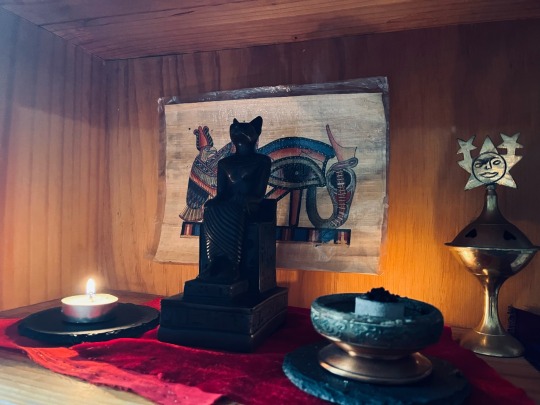
Ancient Egyptian Incense
Kyphi Tsa (incense) is an ancient Egyptian incense used in sacred ceremonies, often in temples but possibly available for home practice. It also smells amazing and I’ve been using it as a good standard incense offering for the Egyptian deities I sometimes work with. Recipes vary, but I found this one on a Geocities website from the early 2000s I can no longer find. I highly recommend it. THe following is copied word for word though. (I no longer make the balls but the rest I do exact.)
Kyphi Incense (Kyphi Tsa)
This recipe was reconstructed from ancient Egyptian papyrii. Although an ingredient or two may not have translated correctly, this should be pretty close to the actual incense used in Egyptian temples.
Amount (In Parts)Ingredients:
3/4 Honey3 Raisins1/4 Copal1/4 Myrrh1/4 Orris1 Sandalwood1/4 Storax1/2 Frankincense1/2 Cinnamon (REAL stuff only, and grind it forever)Red Wine (enough to moisten mixture)Benzoin (enough to roll balls in)
Thoroughly grind all ingredients separately, then mix together groups of ingredients by nature: resinous together, powdery together, etc. Finally, mix all batches together, add red wine to moisten, then roll into 5/8" balls and roll balls in benzoin. Lay out on waxed paper for a week or so, until firm.
CAUTION: Incense balls will look like donut holes. Be careful that folks know that these scrumptious looking balls of incense that you've left lying around are NOT edible!
The balls can be used when firm, but for best results, they should be allowed to cure a few weeks. Kyphi which I've had for two years is better than ever.
Photo is of my Bastet nook — if you choose to work with her, or indeed any deities, she demands full prostration during rituals — as in, on your knees, nose to the floor, arms out in front of you as you say your prayers and make requests. My friend and I had a partial apparition from Bastet the first time I worked with her, followed by a 10-minute downpour, in the middle of the day, and she is, to this day, one of my favourite deities allies on this Earth.
#witch community#witchblr#witch#deity#deity work#witchcraft#deity worship#altar#egyptian deities#bastet#sekhmet#nefertiti#offerings#incense#recipes
36 notes
·
View notes